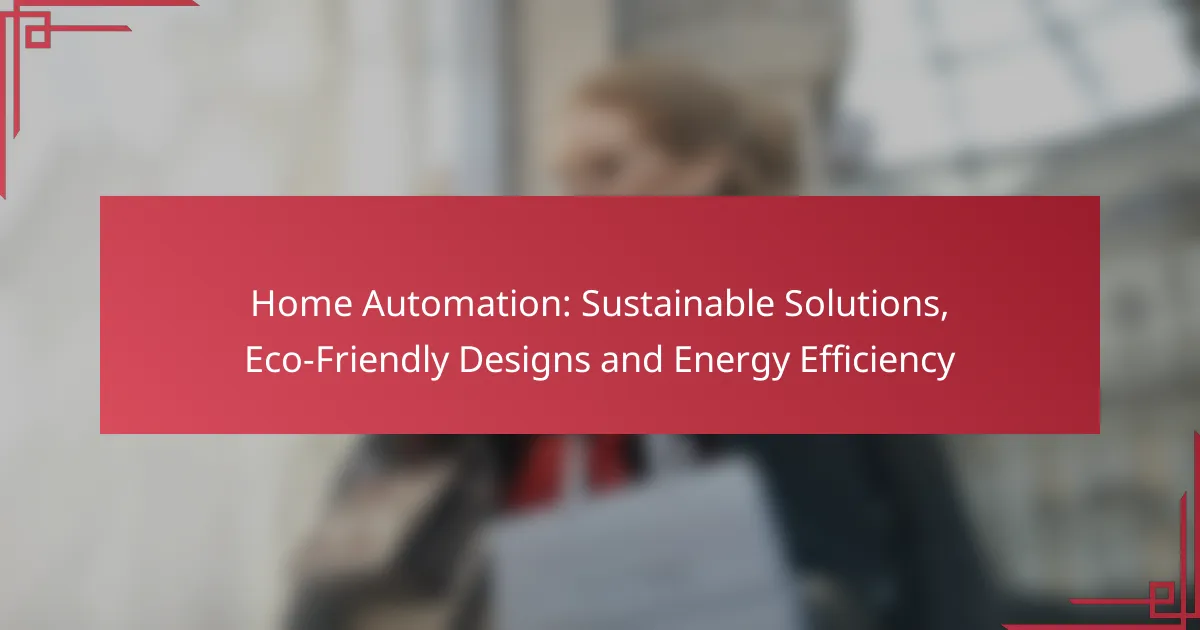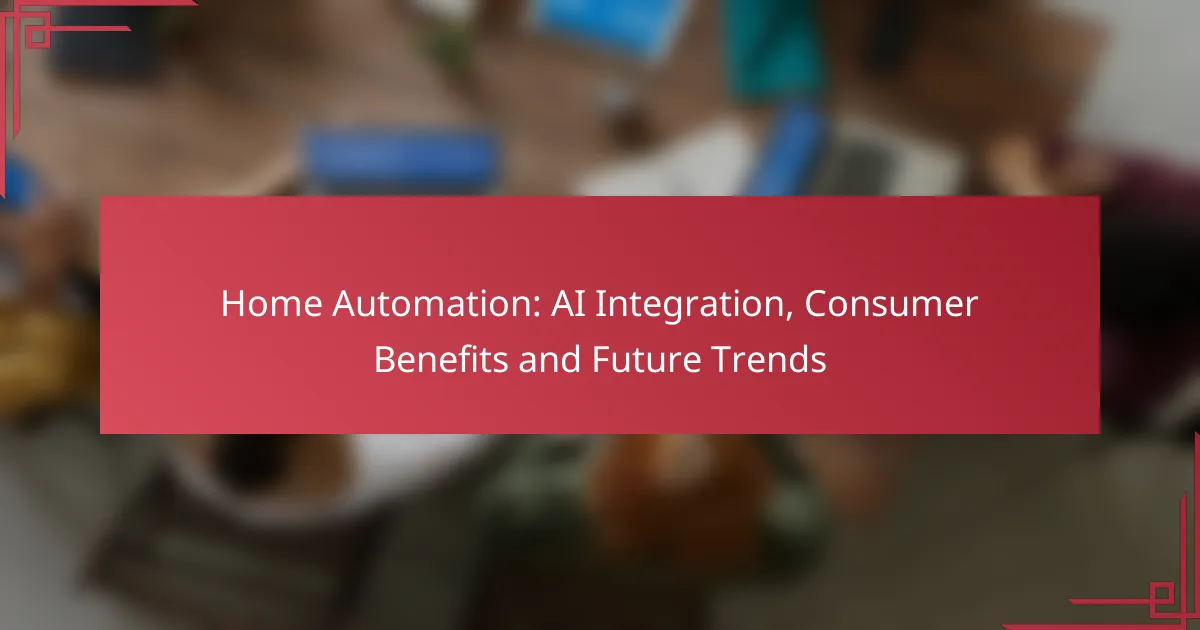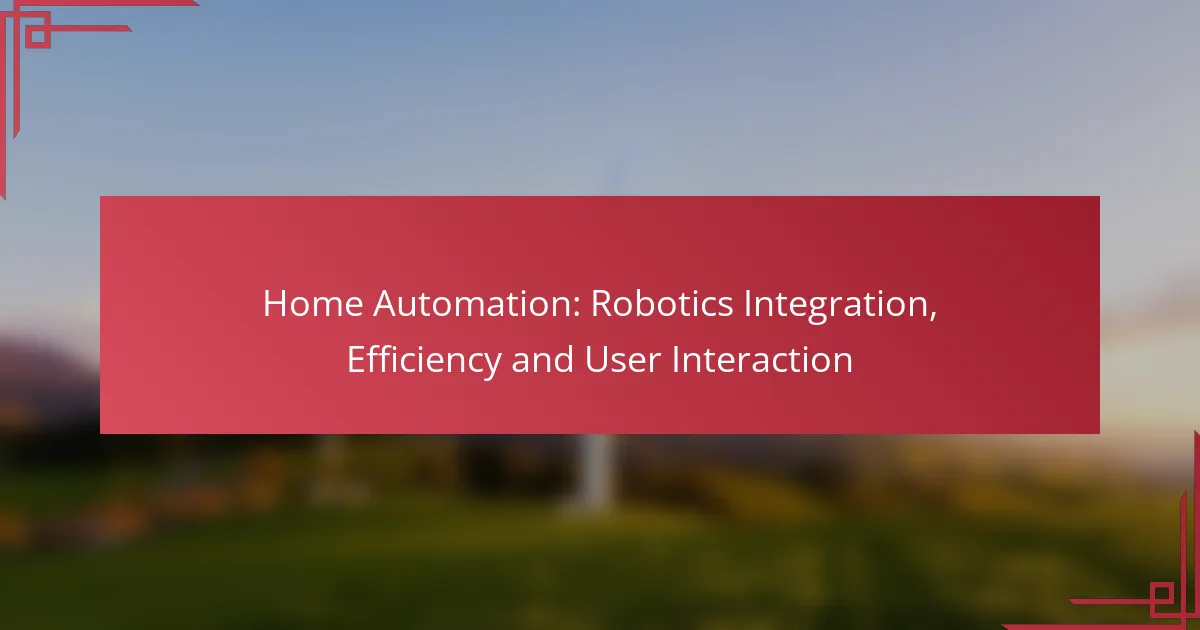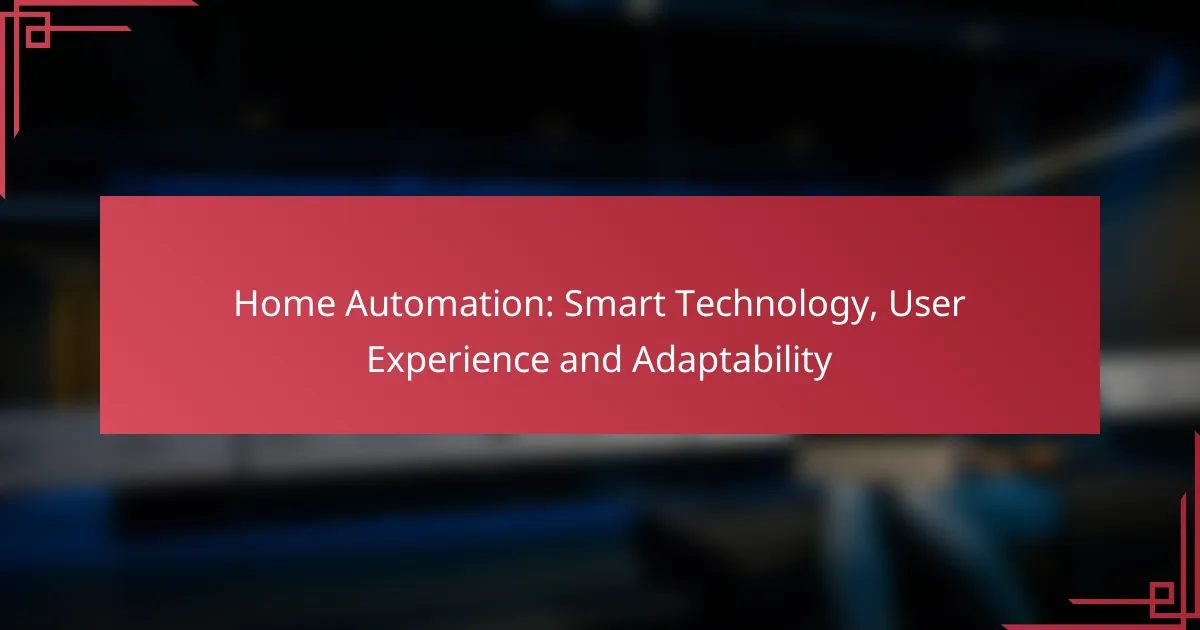Home automation is revolutionizing the way we approach energy efficiency and sustainability in our living spaces. By incorporating smart technologies such as thermostats, energy-efficient lighting, and automated systems, homeowners can significantly reduce their energy consumption and lower utility bills. Additionally, sustainable designs that utilize eco-friendly materials further enhance these solutions, promoting a healthier environment while optimizing energy usage.
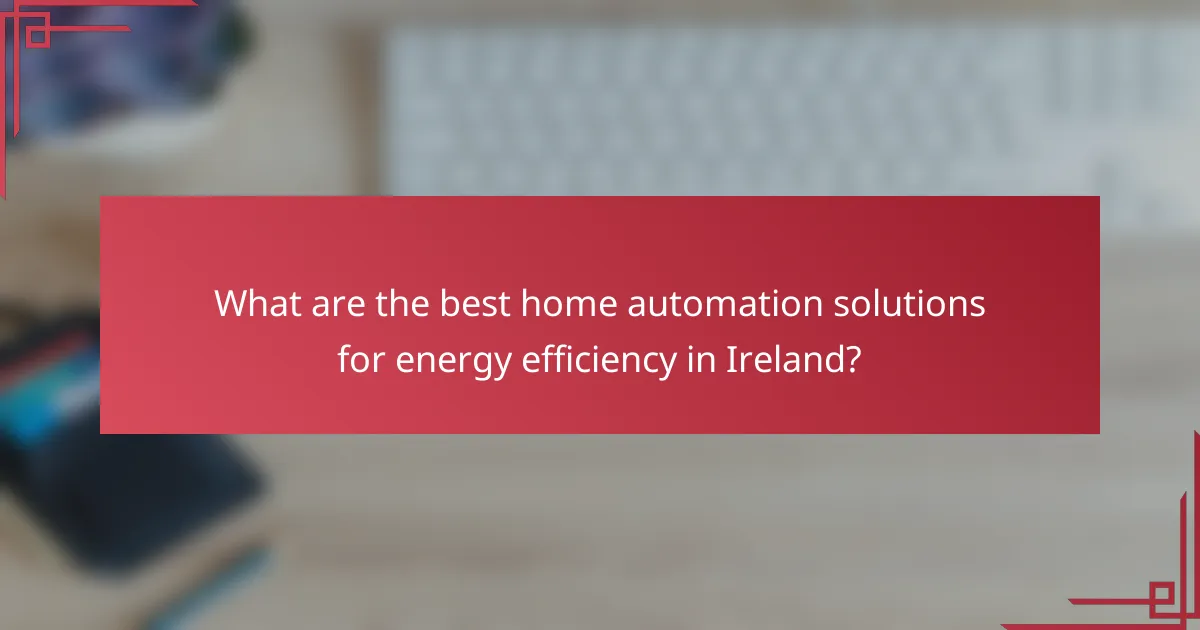
What are the best home automation solutions for energy efficiency in Ireland?
The best home automation solutions for energy efficiency in Ireland include smart thermostats, energy-efficient lighting systems, automated window treatments, smart appliances, and home energy management systems. These technologies help reduce energy consumption, lower utility bills, and contribute to a more sustainable lifestyle.
Smart thermostats like Nest
Smart thermostats, such as Nest, allow homeowners to optimize heating and cooling schedules based on their habits. They learn user preferences and adjust temperatures accordingly, which can lead to energy savings of around 10-15% on heating and cooling costs.
When choosing a smart thermostat, ensure it is compatible with your existing heating system and consider features like remote access and energy usage reports. Installation is typically straightforward, but professional help may be needed for complex systems.
Energy-efficient lighting systems
Energy-efficient lighting systems, including LED bulbs and smart lighting controls, significantly reduce electricity usage. Switching to LED bulbs can cut lighting energy consumption by up to 80% compared to traditional incandescent bulbs.
Consider installing smart lighting systems that allow for scheduling and remote control. This way, you can ensure lights are off when not needed, further enhancing energy efficiency.
Automated window treatments
Automated window treatments, such as motorized blinds or shades, help regulate indoor temperatures by controlling sunlight exposure. By blocking heat in summer and retaining warmth in winter, these systems can reduce heating and cooling demands.
Look for options that can be programmed to open and close at specific times or controlled via smartphone apps. This flexibility maximizes energy savings while enhancing comfort.
Smart appliances from Bosch
Smart appliances from brands like Bosch are designed to use energy more efficiently. These appliances can optimize their operation based on energy demand and can be controlled remotely, allowing for better management of energy consumption.
When selecting smart appliances, consider their energy ratings and features that promote efficiency, such as load sensing in washing machines or energy-saving modes in refrigerators. This can lead to significant savings over time.
Home energy management systems
Home energy management systems (HEMS) provide a comprehensive view of energy usage throughout the home. They track consumption patterns and offer insights to help homeowners make informed decisions about energy use.
Investing in a HEMS can help identify areas for improvement and enable better control over energy consumption. Look for systems that integrate with other smart devices for a cohesive approach to energy efficiency.
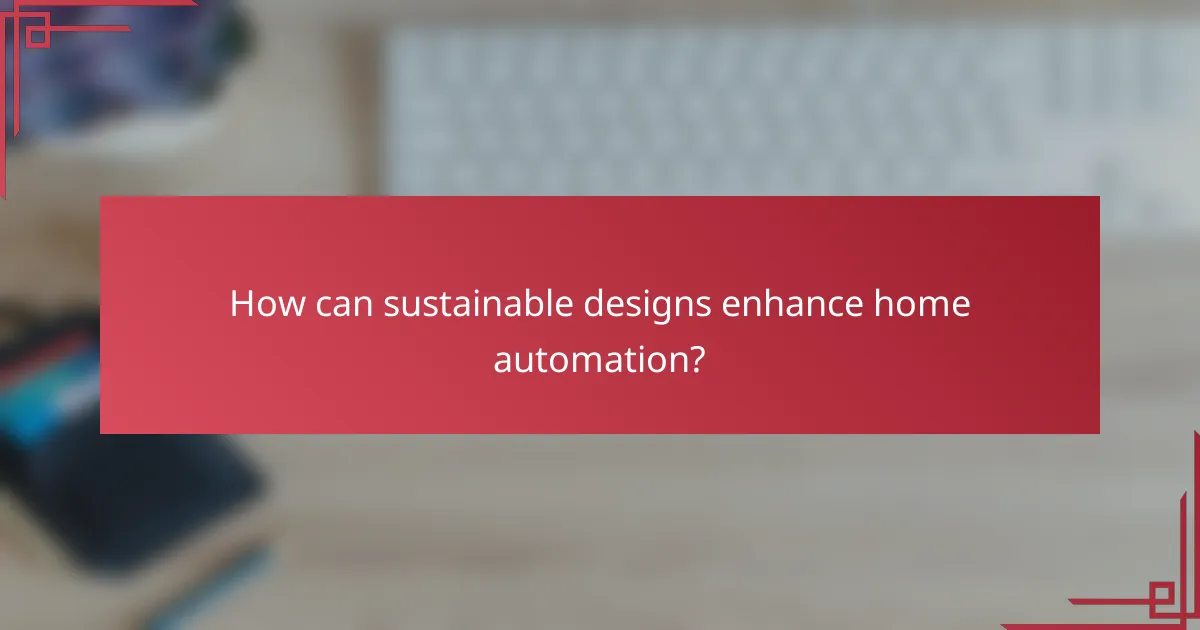
How can sustainable designs enhance home automation?
Sustainable designs can significantly enhance home automation by integrating eco-friendly materials and systems that reduce energy consumption and environmental impact. These designs not only promote efficiency but also contribute to a healthier living environment.
Use of recycled materials
Incorporating recycled materials into home automation systems can minimize waste and reduce the carbon footprint of construction. For instance, using reclaimed wood for structural elements or recycled metal for fixtures can enhance both aesthetics and sustainability.
When selecting recycled materials, ensure they meet local building codes and standards. Look for certifications that indicate the materials are sourced responsibly, such as those from the Forest Stewardship Council (FSC) or similar organizations.
Integration of solar energy systems
Integrating solar energy systems into home automation can drastically lower electricity costs and reliance on non-renewable energy sources. Solar panels can power smart devices, lighting, and heating systems, making homes more energy-efficient.
Consider installing solar batteries to store excess energy for use during peak hours or cloudy days. This setup not only maximizes energy savings but can also provide backup power during outages, enhancing overall home resilience.
Water-saving smart irrigation
Smart irrigation systems can optimize water usage in gardens and landscapes, significantly reducing waste. These systems use sensors and weather data to adjust watering schedules based on real-time conditions, ensuring plants receive the right amount of water.
When implementing smart irrigation, choose systems that allow for customization and integration with home automation platforms. This enables remote monitoring and control, making it easier to manage water use efficiently while maintaining a healthy landscape.
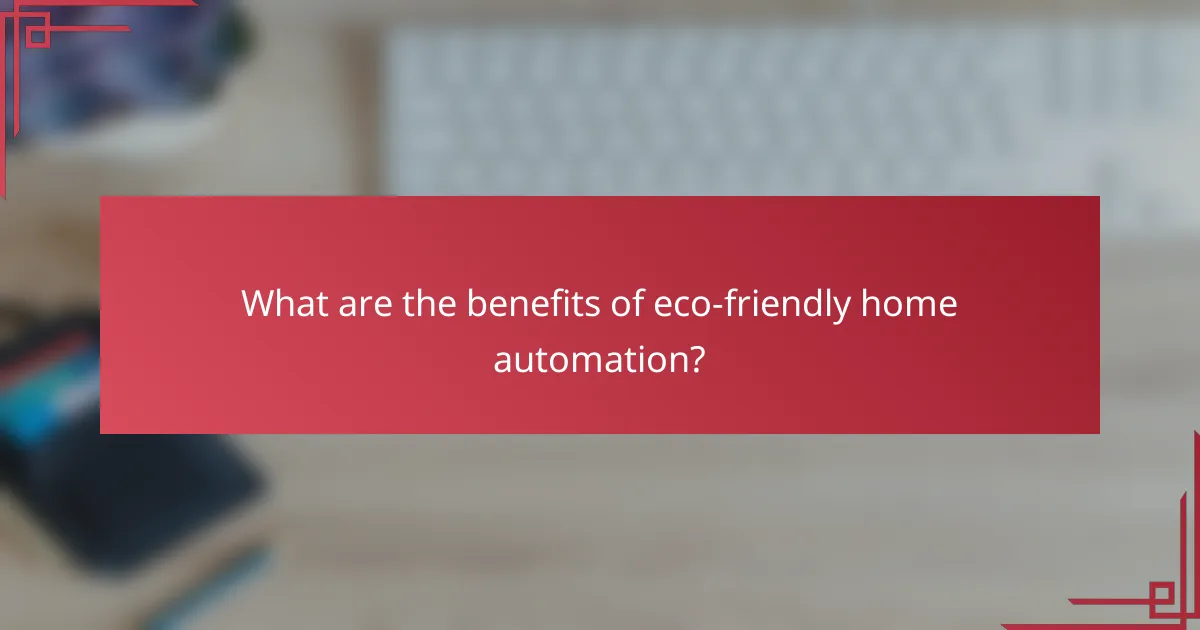
What are the benefits of eco-friendly home automation?
Eco-friendly home automation offers numerous advantages, including cost savings, reduced environmental impact, and enhanced living conditions. By integrating smart technologies, homeowners can optimize energy usage and create a more sustainable living environment.
Reduced energy bills
Implementing eco-friendly home automation can significantly lower energy bills. Smart thermostats, for instance, adjust heating and cooling based on occupancy, which can lead to savings of up to 20% on heating and cooling costs.
Additionally, energy-efficient appliances and smart lighting systems can further contribute to reduced electricity usage. Homeowners should consider investing in devices that can be controlled remotely to maximize efficiency and minimize waste.
Lower carbon footprint
Eco-friendly home automation plays a crucial role in reducing a household’s carbon footprint. By utilizing renewable energy sources, such as solar panels, and smart energy management systems, homes can operate more sustainably.
Moreover, automated systems can help track and optimize energy consumption patterns, which can lead to a significant decrease in greenhouse gas emissions. Homeowners should prioritize technologies that promote energy conservation and sustainability.
Improved indoor air quality
Eco-friendly home automation can enhance indoor air quality by integrating smart ventilation and air purification systems. These technologies monitor air quality and adjust airflow to reduce pollutants and allergens, creating a healthier living space.
Additionally, automated humidity control can prevent mold growth and improve overall comfort. Homeowners should consider investing in smart air quality monitors that provide real-time feedback and recommendations for maintaining optimal indoor conditions.
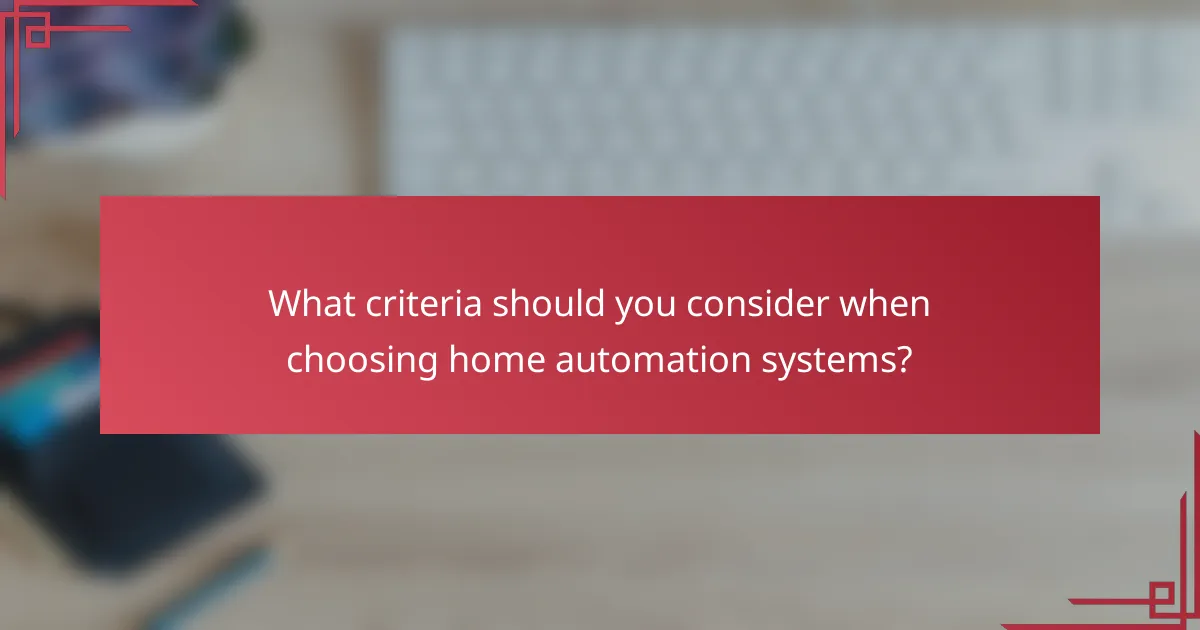
What criteria should you consider when choosing home automation systems?
When selecting home automation systems, consider compatibility with your existing devices, energy consumption ratings, and scalability for future upgrades. These factors will ensure that your system is efficient, sustainable, and adaptable to your evolving needs.
Compatibility with existing devices
Compatibility is crucial for seamless integration of home automation systems. Check if the new system can communicate with your current devices, such as smart thermostats, lights, and security cameras. Look for systems that support popular protocols like Zigbee, Z-Wave, or Wi-Fi to maximize compatibility.
Before purchasing, review the manufacturer’s specifications and user reviews to confirm that the system works well with your existing technology. This will help avoid potential frustrations and additional costs associated with replacing incompatible devices.
Energy consumption ratings
Energy consumption ratings indicate how much power a home automation system uses, impacting both your utility bills and environmental footprint. Look for systems that are ENERGY STAR certified or have similar energy efficiency ratings. These systems typically consume less energy, contributing to lower costs and a reduced carbon footprint.
Consider the overall energy savings potential of the devices you plan to automate. For instance, smart thermostats can lead to significant savings by optimizing heating and cooling schedules, while smart lighting can reduce energy use by adjusting brightness based on occupancy.
Scalability for future upgrades
Scalability refers to the ability of a home automation system to expand and adapt over time. Choose systems that allow you to add new devices or features without needing a complete overhaul. This flexibility is essential as technology evolves and your needs change.
When evaluating scalability, check if the system supports additional modules or integrations. A modular system can save you money in the long run, as you can upgrade incrementally rather than investing in a new system entirely.
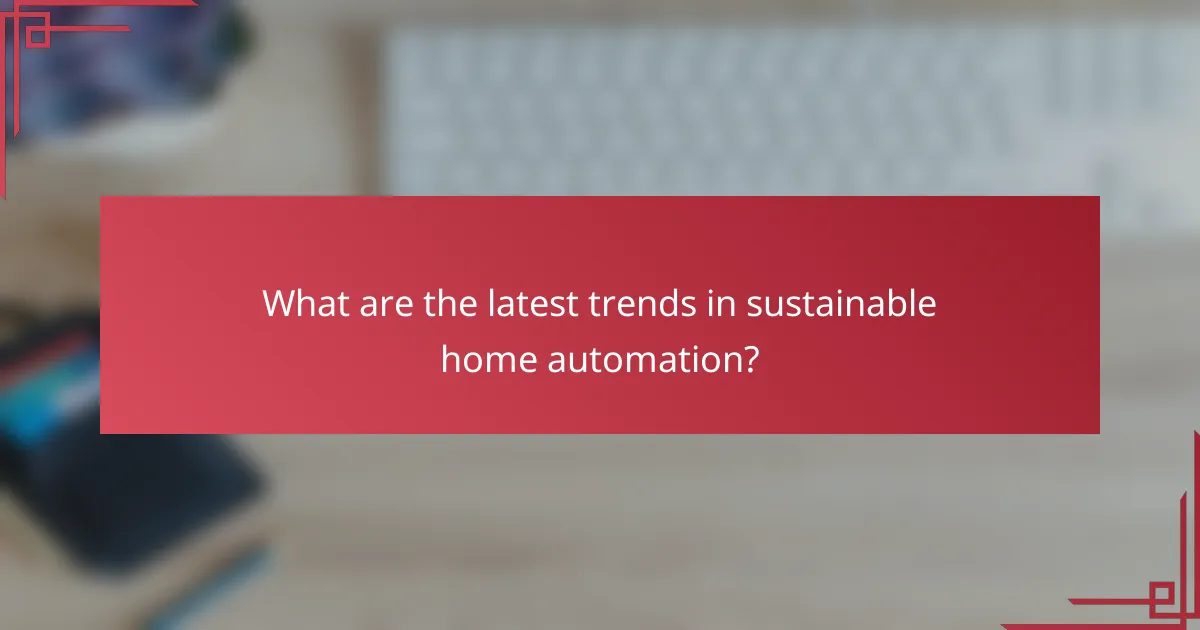
What are the latest trends in sustainable home automation?
The latest trends in sustainable home automation focus on integrating technology to enhance energy efficiency and reduce environmental impact. Innovations such as smart thermostats, energy-efficient appliances, and AI-driven systems are becoming increasingly popular among homeowners seeking eco-friendly solutions.
AI-driven energy management
AI-driven energy management systems optimize energy consumption by analyzing usage patterns and adjusting settings automatically. These systems can learn from user behavior, making real-time adjustments to heating, cooling, and lighting to minimize waste while maintaining comfort.
For example, smart thermostats can reduce energy use by up to 20% by learning when to heat or cool a home based on occupancy and preferences. Homeowners can also set schedules or use mobile apps to control their energy consumption remotely, ensuring efficiency even when they are away.
When implementing AI-driven energy management, consider compatibility with existing systems and appliances. Look for solutions that offer user-friendly interfaces and robust data analytics to track energy savings over time. Avoid systems that require extensive manual input or lack support for integration with other smart devices.
